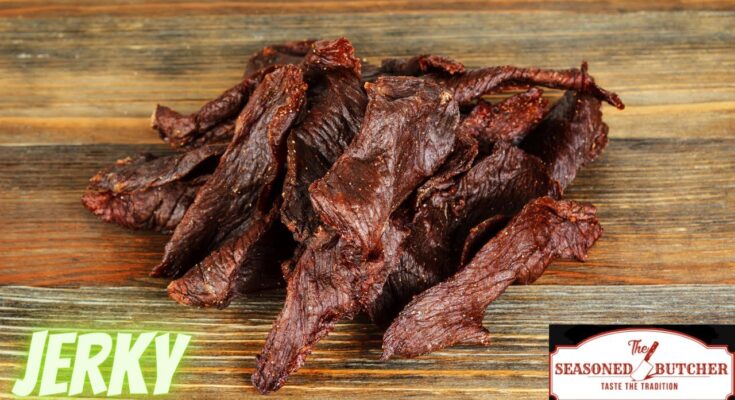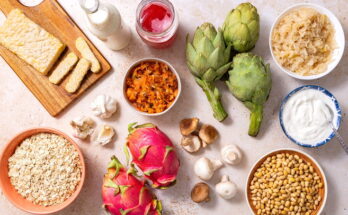Deer Jerky Recipe: If you’re a fan of savory snacks with a rich, gamey flavor, then deer jerky might just become your next go-to treat. Known for its lean meat and deep flavor, deer jerky is a classic snack among hunters, outdoor enthusiasts, and protein lovers alike. Whether you’re prepping for a camping trip or just need a healthy snack on the go, homemade venison jerky is hard to beat.
Making deer jerky at home allows you to control the flavors, the texture, and most importantly, the quality of the meat. This guide will walk you through everything you need to know to make your own batch of delicious, shelf-stable deer jerky.
Benefits of Making Deer Jerky at Home
Sure, you can buy deer jerky from a store, but where’s the fun in that? There are several great reasons why making your own jerky is the way to go.
Health Benefits
Homemade deer jerky is high in protein and low in fat—thanks to venison’s natural leanness. Unlike store-bought varieties, you can skip the preservatives, excess sodium, and artificial flavoring. That means a cleaner, healthier snack.
Cost-Effective
Deer jerky from specialty stores can be pricey. If you’ve got access to venison, either from hunting or a local supplier, making it yourself saves you a ton of money in the long run.
Custom Flavors
One of the best things about making your own jerky is being able to tailor the seasoning. Sweet, spicy, smoky, garlicky—the possibilities are endless. Want a fiery Sriracha version? Or maybe a teriyaki twist? Go wild.
Essential Ingredients for Deer Jerky
Before diving into the process, let’s cover the key ingredients you’ll need to make a solid batch of jerky.
Meat Selection
You’ll want lean cuts of venison such as:
- Backstrap (the prime cut)
- Round steak
- Sirloin
Avoid fatty cuts—the fat can spoil over time, shortening your jerky’s shelf life.
Marinade Ingredients
Here’s a basic but tasty marinade recipe to get started:
- Soy sauce – 1/2 cup
- Worcestershire sauce – 1/2 cup
- Brown sugar – 2 tablespoons
- Garlic powder – 1 teaspoon
- Onion powder – 1 teaspoon
- Cracked black pepper – 1 teaspoon
- Smoked paprika – 1 teaspoon
- Crushed red pepper flakes – 1 teaspoon (optional, for heat)
Feel free to add liquid smoke for that classic smoky flavor without needing a smoker.
Tools You’ll Need
Basic Kitchen Equipment
- Sharp knife – For precise, even slicing
- Cutting board – Preferably non-wooden for meat safety
- Mixing bowl or zip-top bag – To marinate the meat
- Paper towels – For drying excess marinade
- Oven or dehydrator – For the drying process
Optional But Helpful Tools
- Meat slicer – For consistent slices
- Vacuum sealer – For longer storage
- Wire racks – If using the oven
Step-by-Step Deer Jerky Recipe
Let’s break it down step by step so you can easily follow along.
Step 1: Choosing the Right Cut
Pick a lean piece of venison with minimal connective tissue. Trim off any visible fat. This is important because fat goes rancid faster than lean meat, affecting the taste and longevity.
Step 2: Slicing the Meat
Partially freeze the meat for about 1-2 hours. This makes slicing easier and cleaner. Use a sharp knife to cut thin, even slices—around 1/8 to 1/4 inch thick.
- Slice with the grain for chewy jerky
- Slice against the grain for a more tender bite
Step 3: Making the Marinade
Mix all marinade ingredients in a bowl or large zip-top bag. Adjust flavors based on your preference—add honey for sweetness or chipotle for a smoky kick.
Step 4: Marinating the Meat
Add your meat slices to the marinade, making sure every piece is coated. Seal the bag or cover the bowl, then place it in the fridge for 12 to 24 hours. The longer the marination, the stronger the flavor.
Step 5: Drying the Jerky
Using a dehydrator: Lay the slices on trays in a single layer. Set to 160°F and dry for 4-6 hours until leathery and flexible.
Using an oven: Preheat to the lowest setting (usually 170°F). Place slices on a rack over a baking sheet. Keep the oven door slightly open to let moisture escape. Dry for 3-5 hours, checking for doneness.
Step 6: Storing Your Jerky
Once fully dried, let the jerky cool completely. Store in airtight containers, vacuum-sealed bags, or mason jars. For long-term storage, keep it in the fridge or freezer.
Tips for the Perfect Jerky
If you want your deer jerky to stand out, follow these expert tips to level up your game.
Flavor Tips
- Balance your marinade: Too much soy sauce can overpower the meat. Too much sugar can make it sticky. Aim for a balance between salty, sweet, and savory.
- Use fresh spices: Freshly ground black pepper, garlic, and ginger can make a noticeable difference in flavor.
- Try brining: For extra juiciness, brine the meat before marinating. A simple saltwater solution can help retain moisture during drying.
Texture Tips
- Slice consistency: Uniform slices ensure even drying. Uneven pieces will lead to over-dried or under-dried sections.
- Check for doneness: A good test is bending the jerky—if it bends and cracks slightly without breaking, it’s perfect. If it snaps like a cracker, it’s too dry.
- Avoid overpacking trays: Whether using an oven or dehydrator, leave space between slices for proper air circulation.
Storage Tips
- Cool before storing: Warm jerky sealed in a container can lead to moisture buildup and spoilage.
- Use desiccant packs: Toss in a food-safe moisture absorber to extend shelf life.
- Freeze for longer shelf life: Jerky can last 1–2 months at room temp, but up to 6 months in the freezer.
Common Mistakes to Avoid
Nobody wants to waste a good batch of venison. Here are some common blunders to steer clear of:
Overdrying the Jerky
This is the most common mistake. Too long in the oven or dehydrator and your jerky will be tough as leather and flavorless. Stick to the suggested drying time and check often after the 3-hour mark.
Under-seasoning
Venison has a distinct flavor, but jerky needs bold seasoning to really shine. Don’t be afraid to amp up the spices—what seems strong in marinade will mellow out after drying.
Not Slicing Properly
If your slices are too thick, they’ll take longer to dry and may remain chewy in the middle. If too thin, they’ll get crispy and brittle. Aim for 1/8 to 1/4 inch and keep the thickness consistent.
Skipping Food Safety Steps
Always marinate in the fridge—not on the counter. And if you’re not sure your jerky is safe, you can always pop it in a 275°F oven for 10 minutes post-dehydration just to be safe.
FAQs about Deer Jerky Recipe
1. How long does it take to make deer jerky?
It typically takes 4 to 8 hours to dehydrate deer jerky, depending on your dehydrator or oven settings and how thick the meat slices are.
2. Do I need to marinate the venison before drying?
Yes, marinating is essential. It adds flavor and helps tenderize the meat. Let it soak in the marinade for at least 12 to 24 hours in the refrigerator for the best results.
3. What’s the best cut of venison for jerky?
Lean cuts like backstrap, hindquarter, or top round are ideal. These have less fat, which helps the jerky stay fresh longer.
4. Can I make deer jerky without a dehydrator?
Absolutely! You can use a conventional oven set at a low temperature (around 160°F) with the door slightly open to allow moisture to escape.
5. How should I store homemade deer jerky?
Store in an airtight container or vacuum-sealed bag. Keep it in a cool, dry place for up to 2 weeks, or refrigerate/freeze for longer shelf life.
6. How do I know when the jerky is done?
Properly dried jerky should be dry but slightly pliable. It shouldn’t snap when bent but also shouldn’t feel soft or moist.
7. Is deer jerky healthy?
Yes, it’s a high-protein, low-fat snack—especially when made without added sugars or preservatives.
8. Can I add spices to the marinade?
Definitely! Common additions include black pepper, garlic powder, onion powder, cayenne pepper, and smoked paprika to boost flavor.
9. How thin should I slice the venison?
Slice the meat 1/8 to 1/4 inch thick for even drying and the perfect jerky texture.
10. Can I use frozen deer meat for jerky?
Yes, just thaw it completely in the refrigerator before slicing and marinating.
Conclusion
Making deer jerky at home is more than just a culinary task—it’s a rewarding way to turn wild game into an addictive snack that’s packed with protein, flavor, and tradition. From selecting the right cut of meat to perfecting your marinade and drying technique, every step brings you closer to jerky perfection.
Whether you’re a seasoned hunter looking to make the most of your game meat, or just someone who loves to experiment in the kitchen, deer jerky is a must-try project. Follow this guide, and you’ll have a savory stash ready for road trips, hikes, or late-night snacking.



